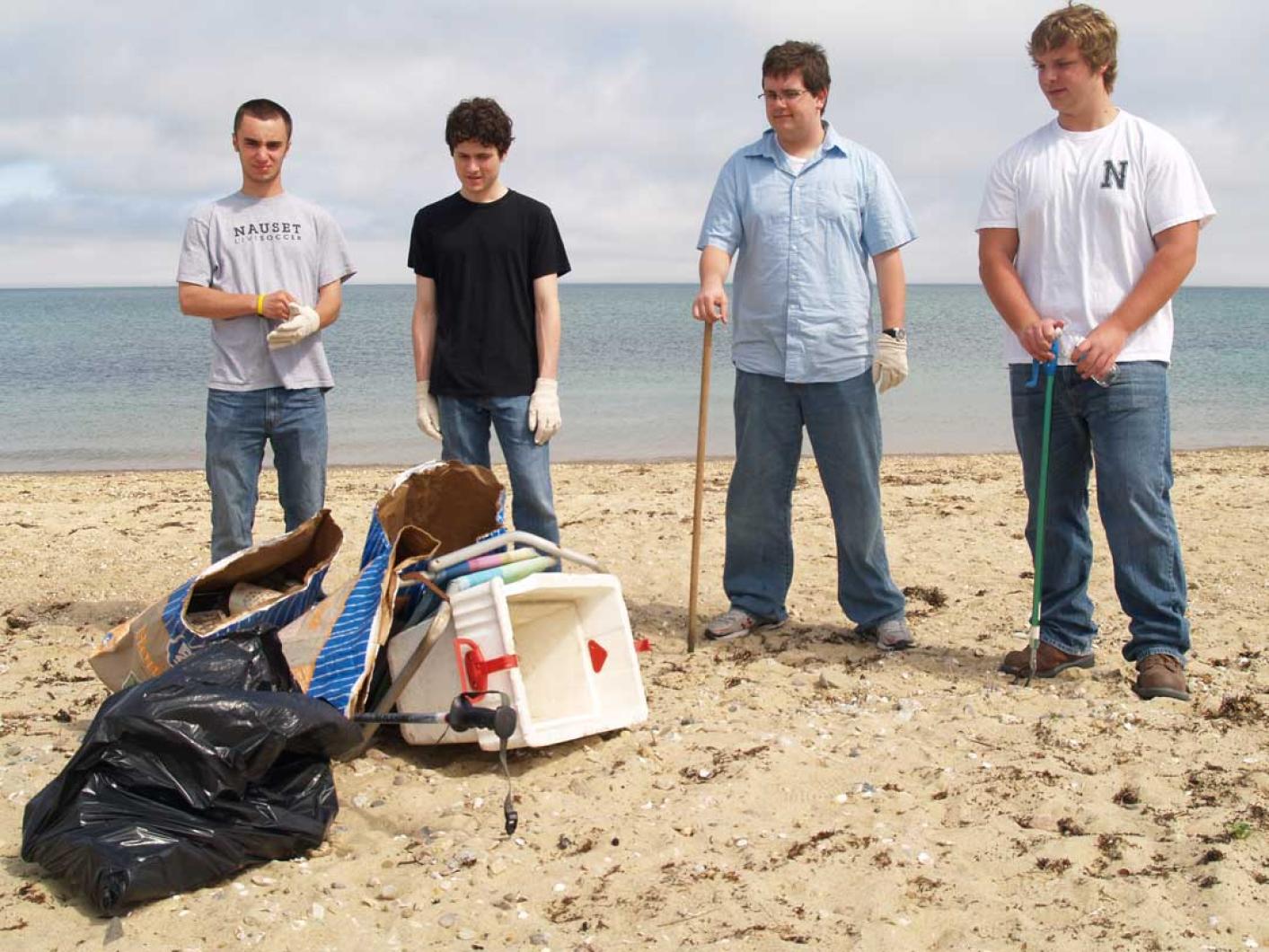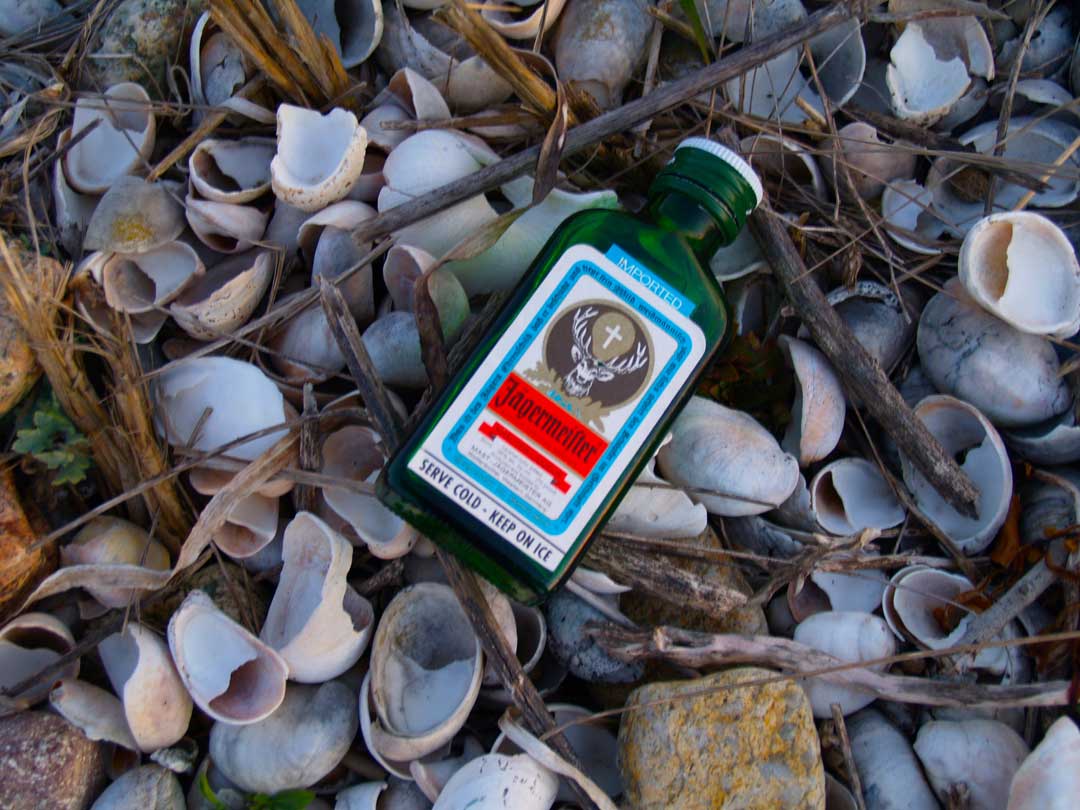“Carry In, Carry Out” read the colorful crayon signs displayed on bulletin boards at many Island beaches, but as beach clean-up volunteers discovered last weekend, not everyone obeys the call to action by elementary school environmentalists.
Vineyard residents of all ages descended on beaches around the Island last Saturday to get their hands dirty and pick up trash in honor of Earth Day. The annual beach cleanup event sponsored by the Vineyard Conservation Society marked its 20th anniversary this year. Some 275 volunteers participated. A conservation society volunteer was stationed at each beach to hand out gloves and trash bags to volunteers and compile information about the trash collected, including the volume collected and taking note of any interesting items found among the debris.
“Everyone has said that there is less garbage than last year, so we’re encouraged by that,” said John Caldwell, who was volunteering at State Beach in Oak Bluffs. “It wasn’t as dirty as we thought,” agreed Louise Searle, who was volunteering at Sengekontacket.
Eastville Beach welcomed a large group of young beach cleaners, from toddlers to high school students. Logan Wells, whose dad lives on the Island, was visiting and brought some off-Island friends to the beach. Their trash gathering efforts netted them a beach chair, a styrofoam cooler and a ski pole, among other things. Not far away, Jacob King climbed into the bushes to collect cans to return and donate profits to the Cancer Relay Walk for Life.
The Boy Scouts of Martha’s Vineyard volunteered at three beaches, with the added mission of a trash scavenger hunt challenge. “It promoted the idea of cleaning up and keeping our environment clean and safe, and the guys had fun,” said pack 90 den leader Sterling Bishop. Work on the beach cleanup also went toward earning the world conservation badge; 20 scouts in grades one through five participated. “What they got the most out of it is understanding that when you throw trash out, it goes somewhere,” said cub master Ewell Hopkins.
Often that “somewhere” is the ocean. The Great Pacific Garbage Patch, as it is known, lies in the middle of the Pacific Ocean somewhere between Hawaii and California. About the size of Texas, the area is estimated to contain 3.5 million tons of trash, much of it plastic. A recent report from Greenpeace on plastic debris in the world’s oceans found the vast majority of it originated on land. The main sources are tourism litter at the coast, sewage-related debris, fishing-related debris and waste from ships and boats.
“Where it comes from is an interesting thing to think about,” said David Nash, a conservation society board member who helped coordinate the event.
The conservation society reported later that most of the trash collected along the Vineyard Haven harbor and Oak Bluffs shoreline came directly from the Island, while the debris found on the north and south shores had mostly washed up from the ocean. A total of 225 bags of trash were collected, about average for the annual event.
Mr. Nash said every year there are many large items recovered, especially electronics such as televisions, computers and microwave ovens. This year a couch was found on Lucy Vincent beach.
“I took an entire set of kitchen cabinets out of Crystal Lake four or five years ago,” recalled conservation society president Terry Appenzellar, who was volunteering at State Beach. “I took a vacuum cleaner out of here a few years ago — it’s crazy,” she said.
“There’s still an awful lot of nip bottles, it’s inexcusable . . . things that people just throw away and you can’t understand why they can’t just put them in the garbage can,” she continued. Other volunteers commented on the number of nip bottles collected.
But nip bottles weren’t the only thing found in abundance. “One of the things we pick up most of is deflated balloons with ribbon hanging on them — and the animals get messed up in them,” said Donna Maurice, who volunteered at Fuller Street Beach. Other commonly found items included footwear, beer cans, plastic bags (including collection bags for dog droppings), milk crates and rope.
This year, thanks to generous sponsors, the conservation society hosted an after party for volunteers at the Tisbury Wharf. After enjoying his Flatbread pizza on the harbor, boy scout Trip Hopkins reflected: “The thing I learned today is that you shouldn’t leave trash because you can injure animals, like the seagulls . . . they eat it and choke and die, and that wouldn’t be nice.”
Ms. Appenzellar added: “It’s up to all of us to leave only our footprints behind as opposed to all of our detritus.”







Comments
Comment policy »